Episode 6: Leaving
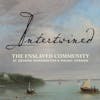
Episode 6: “Leaving”
Nancy Carter Quander was just a child when George Washington died in December 1799, but his death changed her life forever. Washington’s decision to emancipate his enslaved people in his will had consequences for Mount Vernon’s enslaved community and their descendants that persist into our own time. In this episode, we look at the meaning of freedom for a community intertwined through marriage and kinship, its continued evolution after Martha Washington’s own death in 1802, and how members of the descendent community are recovering their family histories.
Featuring:
- Jessie MacLeod, Associate Curator, George Washington’s Mount Vernon
- Mary V. Thompson, Research Historian, Fred W. Smith National Library for the Study of George Washington
- Dr. Cassandra Good, Assistant Professor of History, Marymount University
- Dr. Bruce Ragsdale, former Director of the Federal Judicial History Office
- Dr. Lynn Price Robbins, historian of George and Martha Washington and Early America
- Judge Rohulamin Quander, President and Founder, Quander Historical and Educational Society
- William Norwood Holland, Jr., J.D., retired, National Labor Relations Board
- Ann Louise Chinn, Founder, The Middle Passages Ceremonies and Port Markers Project
- Stephen Hammond, Syphax Family Historian and Scientist Emeritus, The United States Geological Survey
- Dr. Scott Casper, President, The American Antiquarian Society
Full transcripts, show notes, and bibliographies available at www.georgewashingtonpodcast.com.
Intertwined: The Enslaved Community at George Washington’s Mount Vernon
Episode 6: “Leaving”
Co-written by Jeanette Patrick and James P. Ambuske
FINAL TRANSCRIPT
Episode Published December 13, 2021
SPEAKERS:
- Brenda Parker, Coordinator of African American Interpretation and Special Projects, George Washington’s Mount Vernon
- Jessie MacLeod, Associate Curator, George Washington’s Mount Vernon
- Mary V. Thompson, Research Historian, Fred W. Smith National Library for the Study of George Washington
- Cassandra Good, Assistant Professor of History, Marymount University
- Bruce Ragsdale, Director of the Federal Judicial History Office Emeritus
- Lynn Price Robbins, historian of George and Martha Washington and Early America
- Judge Rohulamin Quander, President and Founder, Quander Historical and Educational Society
- William Norwood Holland, Jr., J.D., retired, National Labor Relations Board
- Ann Louise Chinn, Founder, The Middle Passage Ceremonies and Port Markers Project
- Stephen Hammond, Syphax Family Historian and Scientist Emeritus, The United States Geological Survey
- Scott Casper, President, The American Antiquarian Society
BRENDA PARKER: This podcast is supported by anonymous friends of George Washington’s Mount Vernon.
PARKER: January 1, 1801. A day of joy. A day of sorrow. A day filled with new opportunities.
But also filled with fear.
Nancy Carter was about 12 years old. Today was the day she had been waiting for, for over a year. Carter, her mother Suckey Bay, and her two sisters, Rose and Nancy, were free.
Free…Free at last.
They were the fortunate ones. They could now leave River Farm. Leave Mount Vernon.
But most of their community could not. Less than half the people at River Farm were now free. The other half, still enslaved. Still seen as property.
Nancy Carter’s mother, Suckey Bay was an agricultural worker, owned by George Washington. And since a child’s legal status follows their mother’s, Washington also owned Carter and her two sisters. Based on the terms of Washington’s will, upon Martha Washington’s death, 122 people would be free. Free at last.
But no one knew how long that could take. Or what might cause her death. Fearing for her life, Martha decided to enact the manumission clause of Washington’s will early.
January 1, 1801, Manumission Day. A day filled with joy. A day filled with sorrow.
I am Brenda Parker, Mount Vernon’s Coordinator of African American Interpretation and Special Projects.
And this is Intertwined: The Enslaved Community at George Washington’s Mount Vernon.
Episode 6: “Leaving”.
On December 14, 1799, the commander-in-chief of the Continental Army, first president of the United States, and master of Mount Vernon, George Washington died.
He was 67 years old. Until a few days before his death, he seemed to be in good health. The morning before his demise, Washington woke feeling unwell. Unbeknownst to him, he had a throat infection. But he still went about his day, supervising enslaved workers across Mount Vernon.
Overnight, Washington’s condition worsened. The next morning, when Caroline Branham, an enslaved women who worked as a housemaid, entered the Washingtons’ bedchamber to light the fire, she was sent to get help.
Over the course of the day, many doctors attempted to cure him. Nothing worked. Late in the afternoon, Washington asked Martha to retrieve two wills from his Study. He reviewed them. He had one burnt. The other held the fate of 123 people in it.
On the night of the 14th, between 10 and 11 pm, Washington uttered his last words, “Tis well”.
He was surrounded by his wife, close friends, and at least four enslaved people: Caroline Branham, Molly, Charlotte, and Christopher Sheels. Four days later, he was laid to rest in the Washington family tomb that overlooked the Potomac River.
Not long after his death, the contents of Washington’s will became public knowledge. It included what would happen to all of his property, land and people.
Here’s Mount Vernon’s Associate Curator Jessie MacLeod.
JESSIE MACLEOD: In the last year of Washington's life, there were 317 enslaved men, women and children living at Mount Vernon. Of those, 123 owned directly by Washington, 153 were owned by the estate of Martha's first husband, Daniel Parke Custis. So she had use of them, but she didn't legally own them. And George Washington, as her second husband, had control over those people, but he didn't own them either, and so neither he nor Martha had the authority to free them or sell them. And then there were also 41 individuals at Mount Vernon who were rented by Washington from other slave owners. Forty of them were owned by Penelope French, who was George Washington's neighbor, and he had purchased a track of land from her and part of the conditions of that purchase was that Washington would also rent the enslaved laborers who had been working on that land. And he also rented one individual, a man named Peter Hardeman, and Peter Hardeman worked with Washington horses, he was a groom. Those 41 individuals were not owned directly by Washington, but he paid their enslavers for the use of their labor.
PARKER: Washington’s will could only set free the 123 people he legally owned. This meant 194 people living and working at Mount Vernon were still enslaved.
As we explored in episode three, during his life, Washington did not make any public statement in opposition to slavery, though he wrestled with the question of slavery privately. His will, was his one public act.
We aren’t sure when Washington came to the decision to free the people he owned. Was it after he transitioned his main cash crop from tobacco to wheat? Or maybe after the Revolutionary War? Or during his presidency?
It would have been legal after 1782 for him to free the people he enslaved.
Here’s Mount Vernon’s Research Historian Mary V. Thompson.
MARY THOMPSON: It wasn't until 1782, that Virginia made it possible for individual slave owners to free their slaves and before then, it took some extraordinary action by an individual enslaved person in order for them to get their freedom. If they had done something like that, saving somebody from a fire or something like that, it would be possible for a slave owner to ask for permission from the legislature to free this person, because of something that they had done. But for most people, they were never gonna be able to do something that special.
PARKER: While Washington legally could have acted as early as 1782, he waits. In 1786, he writes “it being among my first wishes to see some plan adopted, by the legislature by which slavery in this Country may be abolished by slow, sure, & imperceptable degrees.” Was he waiting for others to act? Perhaps.
Some individual enslavers, like fellow Virginian, Robert Carter the third began manumitting enslaved people in this period. Washington, however, believed ending slavery through legislative action would make a more powerful statement. In the new nation’s republican system of government, state assemblies represented the will of the people. Abolishing slavery by law involved the people taking collective action against it. Washington knew it was possible. Since the Revolutionary War, he had witnessed multiple northern states pass laws to gradually end slavery. In Virginia, Thomas Jefferson drafted a gradual abolition bill in 1779. But the state legislature failed to pass it.
So in his death, Washington acted. His will instructed that the enslaved people he owned be freed at Martha’s death. There was one exception. He immediately emancipated William Lee and provided him an annual pension of $30. There were also several provisions in the will for financial support and education of Mount Vernon’s freed people. Some were required by Virginia’s 1782 law, including the establishment of a permanent fund, to provide clothing and food for those too elderly or sick to support themselves. Washington specified that young children without parents be placed under the guardianship of the court, taught to read and write, and apprenticed in a “useful occupation.” He also sternly forbade his executors from selling, or transporting out of state, any enslaved people before the terms of the manumission went into effect.
CASSANDRA GOOD: One person is immediately freed in George Washington's will, his enslaved man servant as he was called, who accompanied him during the American Revolution. William Lee, who is functionally disabled at this point, and that is the only person that is immediately freed in his will, the rest of his enslaved people would be freed at least by the terms of the will when Martha died.
My name is Cassandra Good, and I'm an Assistant Professor of History at Marymount University in Arlington, Virginia.
It's a tough question to figure out why George Washington waits to free the enslaved people as well, and I think there's still some debate among historians. There's an exchange of letters with David Stewart. There are people that have interpreted those documents as George Washington trying to figure out how to buy the Custis slaves and free them. That is not my reading. And there's several other historians I've talked to about this who say, no, that doesn't seem to be what's happening here, what seems to be happening is he's talking about both selling land and hiring out some of his own enslaved people to just get himself away from having to deal with this 'cause he's tired of it. And this is in the 1790s. But we don't know a whole lot about what Washington was saying to other people about this.
My own analysis on this is that he could well have afforded it. By law, you had to provide for a very young and very old people that you manumitted but that wasn't that many people. The restrictive manumission laws that come in Virginia don't happen until 1806, so he's not subject to things like the enslaved people have to leave the state if they're freed, so he absolutely could have done it sooner in my own analysis of this.
But there's a couple of reasons why he might have waited. One, he knows that as soon as he frees his own enslaved people, it is going to cause chaos on the estate because his enslaved people and the Custis dower slaves have inter-married, they've been in the same place for decades and have built families, and those people are going to stay enslaved, so when he frees his own enslaved to people, he is splitting up families, which he feels uncomfortable with.
The second thing is that if you look at elite Virginians who are doing this in this window between like the Revolution and 1800, which there are a number of people, they generally do it in their will, and they're still going to benefit from the labor during their lifetimes. I think it's also that this would have been a pretty bold move for him to do, it would have been transformative in terms of the debate about slavery and setting an example, and possibly shifting the debate, but he chooses not to. I think it's a choice, and I think it has to do with how he sees himself, his reputation, and how bold he's willing to be.
BRUCE RAGSDALE: We will never know why Washington decided to emancipate his slaves. It's one of the greatest challenges that anybody who studies in Washington is the fact that he never explained himself; that he offered no principled statement of opposition to the institution of slavery.
Bruce Ragsdale, I was for many years the Director of the Federal Judicial History Office.
But if you follow the path by which he goes from the first moment he acknowledges support for gradual abolition; acknowledges that there is something that is essentially unjust about the institution of slavery. If you follow that pattern, there's a long road of trying to make slavery somehow work with improved agriculture and to improve slavery; and then it's only after the failure of that and then the failure of a very complicated and improbable plan to lease out the farms at Mount Vernon to British farmers by which he thought would enable him to then free the enslaved; and the failure of that as well, that leaves him with no choices but his own individual action. Virginia is not going to support gradual abolition, and I think that then dovetails with the 20 years of being appealed to by abolitionists. And that brings you to the emancipation by his will.
PARKER: We don’t know why Washington made the decision to free the people he could. We don’t know if Washington said anything about slavery in the copy of his will he burnt, but the will he drafted six months before his death ensured 123 people would gain their freedom.
But not on his death. Upon Martha’s.
LYNN PRICE ROBBINS: He doesn't want to do it when Martha's still alive because he wants her to retain the same level of living. And so he feels that if he keeps everything the same, she can keep her household enslaved people, everything remain at that high level of living until she passes away.
My name is Lynn Price Robbins, and I am an historian of George Washington and Martha Washington as well as Early America and the Early Republic.
George Washington's nephew Bushrod, writes to her and suggests that she should free them earlier. One thing he says is, it'll take a lot of responsibility off of you, just don't worry about plantation management, because at this point, she's not in good health, she moves up to the third floor and she's almost locked away. She just sees her grandchildren, but she's not really participating in life at the plantation like she used to. And so he suggests that she should perhaps free them earlier.
PARKER: Martha was also motivated by the events happening around her. One of those events occurred during the summer of 1800. Gabriel Prosser led an unsuccessful revolution to end slavery in Virginia. Over the next few months, more than 70 enslaved men were arrested and prosecuted for insurrection and conspiracy. 26 were sentenced to death.
Within this context, it isn’t surprising Martha Washington expressed her fears to Abigail Adams when she visited Mount Vernon. After her visit, Abigail wrote that Martha “did not feel as tho her Life was safe in their Hands, many of whom would be told that it was [in] there interest to get rid of her.” From Martha and Abigail’s perspective, there was considerable risk of George Washington’s enslaved people turning on his widow. Her death would free them.
Whether the threat was real or simply a perceived one remains an open question. Attempting to kill Martha came with considerable risks. Virginians remained on guard following Prosser’s failed revolt and the former First Lady was nearly as famous as her husband. Murdering her might have set them free, but ran the risk of bringing the law and vengeance down on Mount Vernon’s enslaved community.
We don’t have records of what January 1, 1801 looked like from the perspective of the people who were newly freed or from those still enslaved. We do know at least 23 families were separated.
Husband and wife, mother and father each owned by different person.
Nancy Carter’s mother was owned by Washington, but her father was owned by a neighboring farmer.
Sambo Anderson was owned by Washington, but his wife Agnes and their children were owned by the Custis estate.
Kate and her children were probably owned by Washington, but her husband Will was not.
Davey Gray and his wife Molly were both owned by the Custis estate, so for now they remained together.
Family networks crossed the Washington Custis divide throughout the community. And this separation would only get worse after Martha Washington’s death.
ROBBINS: Some of the free people will stay at Mount Vernon because they have families there, so it's not that they all sort of picked up and moved away because for a lot of them, where are they going to go? And so they would stay at Mount Vernon so that they could retain their family connections with the dower slaves, but of course now they're free, so they're free to leave the estate. They're free to make money on their own, but it's not like they could just all go to Alexandria and get jobs. Just because you’re free doesn't mean society is treating you equally. It doesn't mean you have opportunities that any white person would have. And so while freedom is certainly something that they fought for and that was their end goal, it still wasn't easy for them. It still wasn't an ideal situation because of the society that they were living in.
PARKER: While some people continued to live at Mount Vernon, many left. Some settled in free Black communities near Mount Vernon. And in the following decades, they purchased land, planted crops, started businesses, formed churches, founded schools, and created civic organizations. Many of their descendants continue to live in the area today.
Judge Rohulamin Quander and his family are part of this community.
QUANDER: I think it was around 1759 or 60, the records will show, a woman named Suckey Bay was listed in that inventory, a young girl at the time, when another inventory was later taken, in the 1790's, Suckey Bay was still there, and she had at least two daughters, Nancy Carter and Rose and President Washington provided for emancipation of his enslaved in his will, and when he passed in 1799, they were still being held until they were released on Martha's death. Sometime, shortly after that Nancy Carter, Suckey Bay, Rose, and the others were free to leave.
They didn't go very far, probably didn't have much money, or any, no skills, couldn't read or write, and she stayed in that area. Shortly thereafter, she married a free Black man named Charles Quander. We don't know whether he was living actually in Virginia itself or was he a little further up in the section of Virginia that was at that time, Washington DC. But they got married and they had at least four children, and one of those children was Osmond Quander. And from there, we get the presence of the Quander family being established and land being owned because Osmond owned several hundred acres of land in the Woodlawn Plantation area. And there's a book, it lists him as an owner of 300 acres of land.
My name is Rohulamin Quander. I am the President and Founder of the Quander Historical and Educational Society.
What was my connection? There were four branches of the Quander family. The two Maryland sides, one free and one enslaved. You get another line coming over to Virginia, and so we have two free lines of Quanders, two enslaved lines of Quanders, but all going back into the 1600's in Charles County, Maryland.
All of the Quanders are related, but all of the Quander branches did not pass through Mount Vernon. The ones who were born of Nancy Carter Quander and Charles Quander, and then ultimately the other groups that were also born out of West Ford who was also born of another line, they are all descended from Mount Vernon and they are connected to the plantation itself. But those of us like myself, on the Maryland side, which is the older ancestral route, we have the shared history of being Quanders going back into the 1600's, but we were still on the Maryland side of the river. So we are related, but we are not descended from the Washington connection.
PARKER: The records aren’t clear on when Nancy Carter and Charles Quander married. We believe it happened during the first decade of her freedom. Together they built a family, and since the status of the children follows the status of the mother, they were born free. Much of what we know about this family and other people freed comes from county registers of free Blacks.
Virginia law required free African Americans to register every three years with local authorities to get a certificate of freedom. A person’s name, physical description, age, and how they obtained their freedom were often recorded. While many of these records no longer exist, and the ones that do survive are often filled with errors, they provide us with some information about Virginia’s free Black communities.
Another family that was part of these free Black communities was the Holland family.
WILLIAM HOLLAND, JR: I am William Norwood Holland, Junior. I grew up in a community called Gum Springs in Alexandria, Virginia. Gum Springs was once a part of the Mount Vernon plantation that was known as Muddy Hole Farm. My paternal ancestors moved there in the 1930s. Prior to that, they were located at Woodlawn plantation. They moved there as a result of George Washington's will. A number of free slaves occupied property there that was known as Freetown, and of course Fort Belvoir came in the 1920s and 1930s, and they brought what was then Camp AA Humphries, and that became Fort Belvoir and the family was bought out and they relocated to Gum Springs. My recorded ancestors at Mount Vernon, back about eight generations to Boatswain and Matilda. Boatswain was a ditcher and Matilda was a weaver. They had three kids, then Little Boatswain and Lenny, and Lenny then had a daughter who was also a name after her grandmother Mortila or Matilda, there are two different variations on spelling, and Lenny had a son named William Holland, who would become my fifth great grandpa.
PARKER: As free Black communities formed, they built physical spaces they could gather together in.
HOLLAND: Originally, like the Quakers, they had a meeting house and cemetery, and again, the Black community would often mirror the larger white community, so they had a church and they had the cemetery. That cemetery is still in existence today. My grandfather and all those before are still buried there, but right next to that was the church, and you can still see the steps from that original church in the cemetery.
PARKER: We will have more from Intertwined after the break.
JEANETTE PATRICK: Hi I’m Jeanette Patrick one of the co-creators of Intertwined. If you would like to explore the topics discussed in this episode, learn more about our guests, or get a list of related readings, please visit George Washington podcast dot com.
Thank you for listening. Now, back to Intertwined.
PARKER: This new chapter for the community of people formerly and still enslaved at Mount Vernon had only just begun when it was divided again. Less than 18 months after 122 people were freed, Martha Washington died. She had outlived all four of her children. Which meant the 153 people still enslaved at Mount Vernon would be dispersed to her grandchildren.
Here’s Drs. Good and Price Robbins.
GOOD: There's four grandchildren and they're all children of Jackie Custis with his wife Eleanor Calvert Custis, later Stewart. They had seven children, four survived. And so they each are getting a share
ROBBINS: You have George Washington Parke Custis, who they call Wash, Washy, you have Nelly, so Eleanor Parke Custis, Martha Parke Custis Peter, who's Patsy and then you have Elizabeth Parke Custis. And all of the women have been married, so Nelly's last name is now Lewis, Patsy's is Peter, and Elizabeth's is Law. She marries Thomas Law. And so all of the enslaved people are split up and given to them. And so they essentially are sent out to where all of the grandchildren live and they lived pretty far apart they couldn't jump in a car like we can do today. So Nelly lived at Woodlawn, which is a few miles from Mount Vernon. Patsy lived at Tudor Place, which was in Washington DC, so it was in the Federal City. Elizabeth Parke Custis, she also lived in Washington DC for a while, but then she separated from her husband and then she was in Maryland for a while, and then she went to Alexandria, so she didn't have one place where she remains like the others. And George Washington Parke Custis, he lived at Arlington House, which was the home of Robert E. Lee, and then the Arlington National Cemetery. So they were split up, there were families that were split up, and when you think about how far these individuals were from each other with the transportation of the time, they didn't have their own horses. They didn't have access to carriages. And so most likely, it would be very, very difficult for them to see their family members anymore once they were split up when Martha passed away.
GOOD: For instance, William Lee's brother Frank was owned by George Washington, Frank Lee is freed. His wife Lucy, and their younger children, Michael and Patty they're all dower slaves, so they go to the Lewis' at Woodland. The older son, who at this time 16 is separated from his parents and sent to Arlington House with George Washington Parke Custis. So this is the kind of thing that the Custis' are doing. We have so much detail from George Washington on what tasks people are doing and even how many people are there and what their names are. For none of the grandchildren do we have anything like that.
PARKER: The Twine family was also split, first by Washington’s death and again by the Custis grandchildren.
ANN CHINN: Sall was Custis property, which is why she and Barbary ended up at Tudor Place. Sall and her children, I think, were assigned probably to Oakland Farm or in Seneca, Maryland at one of the Peter properties. That's the best that I can tell. Sall's husband George, was "Washington property," he becomes a gardener.
Ann Louise Chinn: Mother, Historian, Community Activist, Founder of the Middle Passage Ceremonies and Port Markers Project.
I don't know where Sall was before she came to Mount Vernon. I would love to know at which property of the Custis where she came from, and there's some sense that she may have had children before she came to Mount Vernon or with George I don't know, things are sketchy, and I do find it interesting that that family has carried a last name through 1712 with the parceling of property between Bird and John Custis IV, and that's how my family, Twine family, ended up as Custis property. There are the Twines that eventually get transferred when Martha marries Thomas Peter, there's that family of Twines that gets transferred immediately at the marriage and then sold by Thomas Peter. So it's a huge family. And Tudor Place makes reference to some Twines that are over in Arlington, in terms of Tudor Place, Sall and the three children basically disappear.
In a way, I have that potential sense of her and these are people who have worked basically as laborers, so they're not conditioned to the house, so it's perfectly natural that if the Peter family kept them that possibly they would have sent them to a farm as opposed to keeping them in an urban setting. But Barbary, her oldest daughter was sent in 1801-- 1802 from Mount Vernon to the Peter family. And so originally, I guess she lived on K Street and then moved to Georgetown with the family. So she becomes what we call an urban enslaved person, but there are stories about how I think that she manipulated her situation by misbehaving and the punishment was to be sent to a farm. The farm being where her mother and her three siblings, would have been. So she gets "time out" and she gets "time out" from house duty and gets to visit with the family until she promises to behave and then she's returned to Tudor Place. And I think that's pretty much the way enslaved people did. You figured out where the cracks were in the system, and you used them as much as you could to maintain your humanity and your relationships.
George the gardener, Sall's husband, when he is free, I still don't know where he goes, whether he ends up in Gum Springs or whether he knows where his family is, and he works his way over to Frederick, Maryland. If you just give me a last name, I could start going through census records, 'cause now he's a free man, and if you're not gonna stay at Gum Springs, to me, the most practical thing would be to move to Maryland where there's at least a significant group of free African descended people. So you might be safer there and then you can sneak off or connect with your wife and your children.
I think that when people look at this history, they seldom look at it as if they're dealing with human beings. What would you do? And for me, George would have either been in Gum Springs where everybody else was that he would know, or he's gone to Maryland. I don't have a sense that he would as a father and a husband just disappear in thin air, but I don't know what name he took. And the records of Gum Springs aren't quite complete, and I can't make sense right now of the census of 1800 or 1810, that may reflect a free Black male named George. I've not been able to do that. It's almost like each one of the families of the descendants just needs to have a genealogist and a research person assigned to plow through this history and thank goodness, that at least they kept property records. I'm grateful for that, I guess, not jumping up and down, but grateful.
PARKER: As we try and weave these histories together, there are so many pieces missing. Oral histories and archival records provide clues, but never the full story.
Unlike their step-grandfather, the Custis grandchildren did not leave many records describing what they did with the people they inherit.
Here’s Dr. Good.
GOOD: Eliza, the eldest daughter, is a little bit trickier we have almost no record of enslaved people tied to her. She and Thomas Law did free some people, but I have no idea what happens to the other ones. There's a couple that show up that she has to get special permission to bring into Maryland with her, because of Maryland laws about importation, you were not allowed to import slaves into Maryland at this point, and so there's an act of the legislature to allow her to bring some enslaved people with her when she goes to live with her daughter in Baltimore at what is now Druid Hill Park.
Nelly and her husband Lawrence, who are given a chunk of George Washington's farms near Mount Vernon, that, they turn into the estate of Woodland they also would have had enslaved people that Lawrence had inherited from his mother, Betty Lewis. Although, Nelly brought a lot more enslaved people to the marriage then he did, and so they had a pretty decent size estate, they eventually leave Woodland and moved to a place called Audley after Lawrence's death. And that's where Nelly dies in the 1850s. And we do have a list of enslaved people there from when her son Lorenzo dies. We have some information, but if Lawrence Lewis kept slave lists, they don't survive.
PARKER: Originally, most of the people divided among the Custis grandchildren resided within the general region. However, over the years the community is further separated.
GOOD: Part of what's interesting about Woodland and Nelly, is that two of her daughters end up marrying planters in Louisiana so there are enslaved people who were born at Mount Vernon that end up in Louisiana, and it's just sort of wrenching to think about that because these people were likely not literate 'cause they weren't allowed to learn to read and write so they can't communicate with their relatives at home. You occasionally see mentions of pass along a message to so and so from so and so in letters between Nelly and especially her elder daughter Parke. And then there's also a point at which Lawrence himself sells a bunch of people to Louisiana. Again, so this is part of that cotton period there. So the only person that the Lewis' ever free that I can find record of is there is one person that Nelly frees in her will when she dies in 1852, that's it.
From the Peters, the only person I've ever found that they freed was Sambo Anderson's son Ralph. Eliza and her husband Thomas do free more people, mostly people who are related to William Costin, who's sort of a complicated figure. So his mother and his mother's other children and then probably unclear who these other family members of his are that are being freed, but there's a group of people that Thomas and Eliza Law end up freeing between 1802 and 1807.
The largest number of people that gets freed is from George Washington Parke Custis. In his lifetime he frees about 25 people, mostly women and children. How many of those are his children? Is to be determined. Some of them, I think almost certainly were. And then in his will, he frees the rest of his people. There are newspaper articles after Wash Custis dies one that says he has 15 children with enslaved people, one that says he has 40. So it appears to have been widely known that he had children with enslaved women.
PARKER: One of the families that can trace their lineage to George Washington Parke Custis is the Syphax family. Their history, like so many others is missing a few key pieces of evidence for them to say for sure they know exactly what happened.
STEPHEN HAMMOND: Charles Syphax was about 10 years younger than George Washington Parke Custis, and he, Charles, ended up at Arlington after George Washington Parke Custis inherited slaves and moved people to that property to build his home.
My name is Stephen Hammond and I am a family historian for the Syphax family. I've been doing that for about 50 years, since I was probably 14 or 15 years old. But in my professional life, I'm an earth scientist, I spent 40 years working for the US Geological Survey, and I am currently retired and enjoying the work that I can do to help people understand our history and to learn more about what they can do to learn about their own history.
George Washington Parke Custis moved from Mount Vernon to the Arlington property. He actually inherited it from his father. It was held for him until he became of age. He then became the owner of this piece of land about just under 1,200 acres actually in terms of the size of the land there at Arlington, as well as other property in the state of Virginia. In addition to that, he also inherited close to 60 people that were a part of the Arlington Estate. It's my belief that George Washington Parke Custis, knowing that he was going to become the owner of this property and the owner of people took liberties with the people that he had advantage of. I think that he used his position and the power that he had to influence how people were dealt with and handled. He ultimately married Mary Fitzhugh in 1804. But the interesting thing about this is that the Fitzhugh family lived on a very large estate, not far from Arlington, and at that estate, I believe that perhaps that is actually where Ariana Carter may have lived. Ariana Carter has a child in 1803. This is Mariah. It would be my guess that she may have been born on the Arlington property.
PARKER: Mr. Hammond believes that George Washington Parke Custis was Mariah’s father. And Mariah was sure of it, based on an interview she did in the 1880s.
HAMMOND: Mariah, growing up on the Arlington Estate, actually supported and tended to her younger sister, Mary Anna Randolph Custis. Mary Anna was born in 1808. Mariah basically tended to her younger sister in terms of the needs that she had. Mariah having grown up there, worked in the same space as Charles Syphax. Charles Syphax was enslaved by George Washington Parke Custis, and he actually became the dining room servant for Custis. He and Mariah courted and they ultimately married in 1821. They married in the parlor of the Arlington House, supported by George Washington Parke Custis and his wife. And about 10 years later, Mary Anna Randolph Custis married Robert E. Lee in the same parlor. So these families were on two different trajectories, one in which the Syphax's were enslaved and the Lee's were an up and coming young couple in terms of Lee's stature in the army and the country and how these lives were being led.
In 1823, Mariah and Charles had their first child, Eleanor Bertha. And in 1825, they had a second child, William Syphax, both were born enslaved. Our folklore says that in 1826, George Washington Parke Custis freed Mariah and gave her 17 acres of land in the southwestern corner of the estate. But we've come to learn that the facts here, we are again talking about documented resources versus the folklore. The documented resources show that George Washington Parke Custis actually sold Mariah and her two children to Edward Stabler, the Quaker apothecary shop owner in Alexandria. So 1825, 1826, Mariah and her two children are sold to this Quaker. He turns around and frees Mariah, and that may have been what George Washington Parke's intent was all along, and I see this as a win, win proposition. It's a win for Mariah and her children because they become free, it's a win for the Quaker apothecary shop owner because of his abolitionist views and his desire to see people who are enslaved freed, and it's a win for George Washington Parke Custis, who was not the best businessman who likely benefited from this for money that he earned as a result of the sale. So from that perspective, all three of these parties gained from this. Now, Charles Syphax remained enslaved. He was not freed until the beginning of the Civil War.
PARKER: While the family’s oral history did not matched up exactly with the archival record, it was a key clue in helping determine when and how Mariah and her two children were freed.
HAMMOND: In 1826, George Washington Parke Custis actually gives her this 17 acres of property where Mariah and Charles, their two children and ultimately 10 children in total grew up and lived for many, many, many years. And once the Civil War started in 1863 the federal government changed how they were gonna collect taxes, and one of the things that they wanted to do was to make it to pay for the war effort, they wanted to levy a tax on those that were in the Confederate States who owned property to pay tax, but ultimately to collect that tax they needed to pay it in person. And the property that is now Arlington was owned by George Washington Parke Custis' daughter and she could not pay the taxes in person. And ultimately the property was confiscated and the Syphax property was confiscated along with that because there was no proof that it was owned by Mariah. And ultimately in 1866 Mariah's youngest son, William Syphax, the young man who was born in 1825 had ultimately been educated and was working for the Department of the Interior, actually lobbied Congress and the president at the time for the return of his mother's property. And in June of 1866, Congress passed the bill for the relief of Mariah Syphax, and it was signed by Andrew Johnson, in June of 1866, to return that property to Mariah where the Syphax's lived until the late 1940's, it remained in the family until the 1940's.
PARKER: Through William’s efforts, his mother Mariah was able to regain the legal rights to her Arlington property from the US government. And the family was able to continue living on the land for another eight decades.
In the decades after George and Martha Washingtons’ deaths the community of people enslaved at Mount Vernon fluctuated.
SCOTT CASPER: The challenge in thinking about slavery at Mount Vernon in the 19th century, is that the story of slavery is distinct from the story of the land.
I'm Scott Casper, I'm President of the American Antiquarian Society, which is a research library and learned society founded in 1812 and based in Western Massachusetts.
While the land that George Washington had owned went to his Washington heirs, the enslaved people George Washington had owned did not. Which meant that each set of new Washington heirs brought their own enslaved people to Mount Vernon. So in 1802, when Bushrod Washington inherited Mount Vernon, he brought with him several dozen enslaved people, men, women, and children, most of whom had been part of his father, that is John Augustine I's estate. And then over time, the enslaved community at Mount Vernon, which grows to be as big as 80 something by 1820, then is shrunk because of a large sale that Bushrod does in 1821 and then grows again in the 1840's and 1850's. Those enslaved communities are brought there first by Bushrod Washington, then under John Augustine Washington II, and Jane Charlotte Washington, there are new people that is, enslaved people who are new to Mount Vernon who are brought by John Augustine, Jane Charlotte and then John Augustine III, who live there alongside a few of the people who had formerly belonged to Bushrod and his wife and were inherited by John Augustine II and Jane Charlotte. So what we have is an enslaved community at Mount Vernon that numbers between roughly 30 people and roughly almost 100 people between 1802 and 1860, but none of them had been the enslaved property of George and Martha Washington.
PARKER: People were enslaved at Mount Vernon for generations before and after George and Martha Washington. Each person left their mark on this plantation. Some returned to it, and many did not.
We know Nancy Carter Quander returned at least once. She was part of a group of at least 12 people who spent a day in 1835 caring for the ground around Washington’s tomb. Sambo Anderson and his son William were among the group. Also there was Berkley Clark, William Hayes, Dick Jasper, Morris Jasper, George Lear, William Moss, Joe Richardson, Levi Richardson, and Joseph Smith.
Some of these people were freed by Washington’s will, others were family members of people who had been. Their presence underlines the impact Mount Vernon had on their families.
How did Mount Vernon’s landscape change in the nineteenth century after the Washingtons died? And what role did enslaved and feed people, along with a group of women, play in interpreting George Washington’s memory and preserving his plantation for future generations? That’s next time on Intertwined: The Enslaved Community at George Washington’s Mount Vernon.
Intertwined: The Enslaved Community at George Washington’s Mount Vernon is a production of the Mount Vernon Ladies’ Association and CD Squared.
I’m your host, Brenda Parker.
Intertwined was co-created and co-written by Jeanette Patrick and Jim Ambuske.
Curt Dahl of CD Squared was our lead producer and audio engineer.
Additional producers were me, Brenda Parker and Jessie MacLeod. MacLeod was the lead curator of the Lives Bound Together exhibit, which inspired this podcast.
Mary Thompson provided invaluable research support. Thompson is Mount Vernon’s research historian and the author of “The Only Unavoidable Subject of Regret": George Washington, Slavery, and the Enslaved Community at Mount Vernon, published by the University of Virginia Press in 2019.
We received fact checking and additional editorial support from Samantha Snyder.
Rebekah Hanover Pettit designed our show’s beautiful artwork.
Thank you to Mount Vernon’s Media and Communications Department for their support.
Our summer interns were Izzy Black and Maggie-Mae Ellison from Midwestern State University in Texas. They helped put together our show notes and episode bibliographies.
Thank you to the Mount Vernon Ladies’ Association.
And a very special thanks to the anonymous friends of George Washington’s Mount Vernon without whose financial support this project would not have been possible.
Learn more about Mount Vernon’s enslaved community and topics covered in this program by checking out our reading lists on our show’s website at George Washington Podcast dot com.
Thank you for listening.
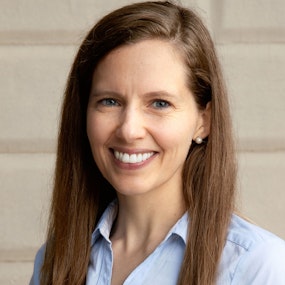
Jessie MacLeod
Associate Curator
Jessie MacLeod joined Mount Vernon’s curatorial team in 2012, after receiving an M.A. in history, with a certificate in public history, from the University of Massachusetts Amherst. She previously received a B.A. in history from Yale University and has worked at numerous historic sites interpreting eighteenth and nineteenth-century American history. In her time at Mount Vernon, Jessie served as lead curator for the award-winning exhibition Lives Bound Together: Slavery at George Washington’s Mount Vernon (2016-2021).
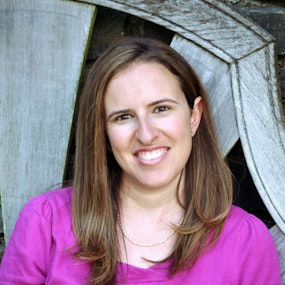
Cassandra Good
Historian
Cassandra Good is an award-winning historian, writer, and teacher. She serves as Assistant Professor of History at Marymount University and consults for historic sites and museums. Good's first book, Founding Friendships: Friendships Between Men and Women in the Early American Republic, was published by Oxford University Press in 2015. She has been researching and writing about George Washington's step-grandchildren, the Custises, and the people they enslaved for nearly a decade. Her book First Family: George Washington's Heirs and the Making of America, is forthcoming in 2023.
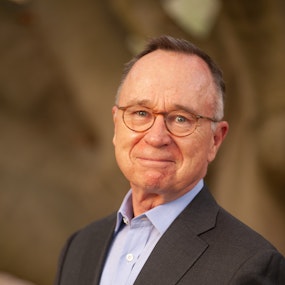
Bruce Ragsdale
Author and Independent Scholar
Bruce Ragsdale is the author of Washington at the Plow: The Founding Farmer and the Question of Slavery (2021). He was a fellow at the Washington Library and the International Center for Jefferson Studies, and he was Mount Vernon’s inaugural fellow with the Georgian Papers Programme. Ragsdale formerly served as the director of the Federal Judicial History Office at the Federal Judicial Center. He received his Ph.D. from the University of Virginia.
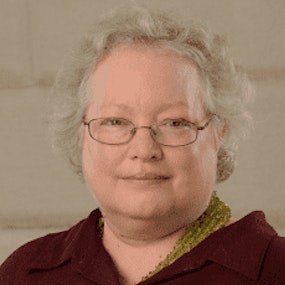
Mary V. Thompson
Research Historian
Mary V. Thompson grew up as an “army brat” in the United States, West Germany, and the occupied city of West Berlin. She began working at Mount Vernon in 1980, after earning a B.A. in History, with a minor in Folklore, from Samford University, and an M.A. in History from the University of Virginia. Mary has filled a number of roles at Mount Vernon, where she is now the Research Historian (2008-present). She curated the traveling exhibition, Treasures from Mount Vernon: George Washington Revealed, which opened in 1998. Her first book was “In the Hands of a Good Providence”: Religion in the Life of George Washington (University of Virginia Press, 2008). More recently, she published A Short Biography of Martha Washington (Applewood Books, 2017) aimed at the young adult market. Her latest book is “The Only Unavoidable Subject of Regret”: George Washington, Slavery, and the Enslaved Community at Mount Vernon (University of Virginia Press, 2019).
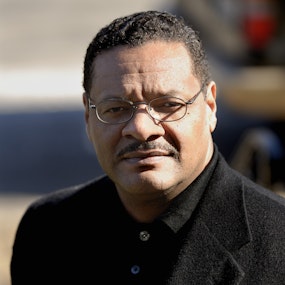
William Norwood Holland
Norwood Holland grew in Gum Springs, attended Fisk University and Howard University School of Law. He's a writer and operates his own publishing imprint and tour guide business.
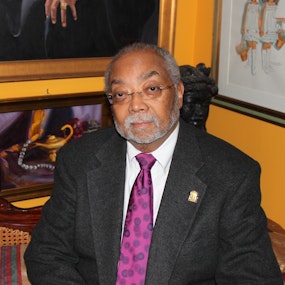
Rohulamin Quander
Judge
Rohulamin Quander, a native Washingtonian, is a retired Senior Administrative Law Judge for the District of Columbia, and a member of the Quander Family whose history traces to the 1670s. Their legacy includes enslavement at George Washington’s Mount Vernon Plantation, where he periodically serves as an advisor. He often serves as a guest lecturer on African American History.
He holds two degrees from Howard University (BA 1966, JD 1969), and in 1985 founded the Quander Historical and Educational Society, Inc., a 501 (c)(3), to document, preserve, protect, and share the family’s legendary history, as an educational tool.
He is a founding member of the League of Enslaved Mount Vernon Descendants, whose Mission is to gather, tell, share, and preserve the many stories of the formerly enslaved ancestors and free people of color who rendered service to George Washington and his family at the Mount Vernon Plantation.
His years of service include addressing human and civil rights inequities among the Dalit (Untouchable) population of India, his mother’s ancestral homeland. He is the author of four books, and a licensed and certified DC tour guide.
Married to Carmen Torruella Quander, internationally acclaimed artist, they have three adult children and one grandchild, and reside in Washington, D.C.
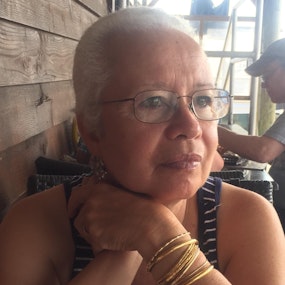
Ann L. Chinn
Board Chair, MPCPMP
PERSONAL
I was born and grew up in Washington, DC, among family and friends with a strong awareness of history. Over the years I became a person who loves stories and the people who generate these narratives. Along the way I also realized that each of us is deeply entwined with a local and national heritage that can be traced through memory as well as knowledge. Textile art, social service, community organizing and historical research are constants in my life. Married to Charlie Cobb (journalist and author), I appreciate language, written and spoken. From my parents and many relatives, I learned the responsibility of honesty, humor and community. Being a member of a diverse and ever-expanding family of three children, five grandchildren, and numerous cousins, I increasingly appreciate the role we all have in telling the story, in valuing who we are and who helped shaped us, and in acknowledging that process.
PROFESSIONAL
MIDDLE PASSAGE CEREMONIES and PORT MARKERS PROJECT, INC (MPCPMP) 2011-2021 Executive Director / Board Chair
-Established the tax-exempt non-profit organization to honor African ancestors and their descendants in the Western Hemisphere
-Assist 55 documented U.S. Middle Passage arrival locations in conducting ancestral memorial services and installing historical markers related to the transatlantic human trade of Africans from the 16th through the 19th century
-Promote the history of the African American experience in the Western Hemisphere through lectures, conference presentations, research, blog posts, and…
Read More
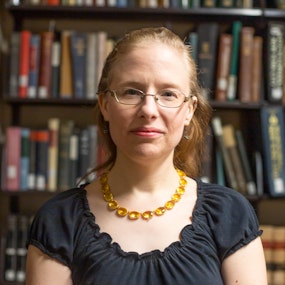
Lynn Price Robbins
Historian
Dr. Lynn Price Robbins holds a PhD in U.S. History from George Mason University. She co-edited "George Washington’s Barbados Diary, 1751-52" and "The Papers of Martha Washington" and is the author of an essay on Martha Washington in "The Women of George Washington's World" (2022). In addition to her research on the Washingtons and women in early America, Robbins focuses on the creation of Washington, D.C., manumission, and the American Colonization Society. She is also a co-host of the 2 Complicated 4 History podcast.

Scott Casper
President / American Antiquarian Society
Scott Casper is President of the American Antiquarian Society, a national research library of American history and culture in Worcester, MA. He is the author of Sarah Johnson's Mount Vernon: The Forgotten History of an American Shrine (2008), and the author or editor of eight other books.
He was previously dean of the College of Arts, Humanities, and Social Sciences at the University of Maryland, Baltimore County and Foundation Professor of History at the University of Nevada, Reno. For more than twenty years he has worked with K-12 educators through the Mount Vernon Ladies' Association, the Center for Civic Education, and the Northern Nevada Teaching American History Project, and for a decade he edited the "Textbooks and Teaching" section of the Journal of American History.
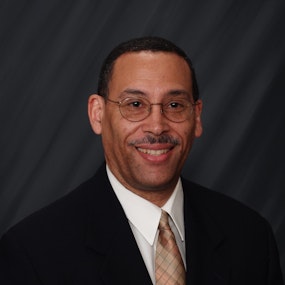
Steve Hammond
Family Historian
Steve is a seventh-generation member of the Syphax family of Washington, DC: a line that moved by force to New Orleans and then by choice to Denver. He has participated in a variety of National Park Service programs at the Arlington House – the Robert E. Lee Memorial to highlight the lives of his Syphax ancestors and other enslaved Americans on the estate. He has spoken at the African American Civil War Museum and the historic Decatur House on Lafayette Square both in Washington, DC and has contributed to exhibits at George Washington’s Mount Vernon and the Smithsonian National Museum of African American History and Culture. He has been interviewed by numerous organizations including NPR, C-Span, Civil War Times and most recently was featured in a story on CBS this Morning that talked about the reopening of the Arlington House after a 3-year closure for restoration. His goals are to educate and inspire others to research and document their own family history.
Other genealogy interests revolve around research on the movement of enslaved ancestors to New Orleans, LA where his ancestry covers both enslaved and free people between 1769 to 1900. A primary focus is on the period leading up to and including the Civil War and the Reconstruction era.
Steve is a charter member of the Sons and Daughters of the United States Middle Passage, the Sons of Union Veterans of the Civil War and a member of the Louisiana Historical Society and Friends of the Thomas Balch Library (Loudoun Co. VA) Black History Committee. Steve is a member of the Afro-American Historical and…
Read More